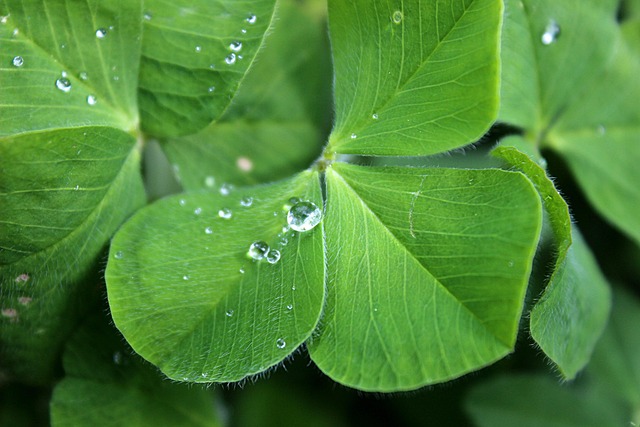Clover mites, tiny arachnids causing significant pest issues in homes and businesses, can be managed through seasonal inspections and eco-friendly solutions. Professional clover mite prevention services offer alternative methods like natural pesticides and beneficial insects to disrupt their four-stage life cycle. Residential and commercial treatments focus on egg, nymph, and adult targeting for effective infestation control without harsh chemicals. Eco-conscious practices such as lawn care, introducing natural predators, and specialized professional services ensure sustainable clover mite control while preserving the environment.
Clover mites can transform lush landscapes into tangled messes. Understanding their behavior and life cycle is the first step in effective clover mite prevention services. While traditional clover mites pest control methods exist, many pose risks to the environment and health. This article explores eco-friendly clover mites solutions, from residential clover mites treatment to commercial clover mites extermination, empowering you to make informed choices for managing these pesky pests naturally. Discover the role of professionals in providing safe, effective clover mite removal.
Understanding Clover Mites: Behavior and Life Cycle
Clover mites are minute arachnids that belong to the family Mitidae. They are known for their rapid reproduction and can quickly turn into a significant pest problem in both residential and commercial settings. Understanding their behavior and life cycle is crucial when it comes to effective clover mite prevention services.
These mites have a four-stage life cycle: egg, nymph, adult male, and adult female. They primarily feed on grass and other plant materials but can cause severe damage to lawns and landscapes when present in large numbers. Professional clover mites removal experts recommend regular inspections during the spring and fall seasons when mites are most active. Eco-friendly clover mites solutions, such as targeted applications of natural pesticides or beneficial insects, can be highly effective in managing infestations without resorting to harsh chemicals. Residential clover mites treatment and commercial clover mites extermination should focus on breaking the life cycle by eliminating eggs, nymphs, and adults to prevent future outbreaks.
Traditional vs. Eco-Friendly Clover Mite Control Methods
In the battle against clover mites, traditional methods often rely on chemical pesticides, which can have detrimental effects on the environment and nearby ecosystems. These chemicals may also pose risks to human health and pets. As a result, there is a growing trend towards eco-friendly solutions for clover mite prevention and control. Professional pest control services are now offering alternative methods that not only effectively manage these pests but also minimize environmental impact.
Eco-friendly clover mite prevention services focus on natural remedies and non-toxic treatments. Residential and commercial properties can benefit from organic compounds, such as essential oils and plant-based insecticides, which deter mites without harming beneficial insects or the overall biodiversity of a landscape. These methods not only protect people and pets but also contribute to a healthier environment. When dealing with a clover mite infestation, considering professional clover mites removal ensures access to the latest eco-conscious techniques in pest control.
Implementing Eco-Conscious Preventive Measures
Implementing eco-conscious preventive measures is a proactive approach to tackling clover mite infestations without resorting to harsh chemicals. For residential areas, regular lawn care practices such as maintaining proper mowing heights and removing debris can significantly deter these pests. Additionally, introducing natural predators like spiders and ladybugs into the garden ecosystem encourages a balanced environment, naturally controlling clover mite populations.
When dealing with larger-scale infestations in commercial settings or severe cases at home, professional clover mite removal services offer specialized eco-friendly solutions. These experts employ methods such as biological control, where beneficial insects are released to feed on the mites, and plant essential oils that act as natural repellents. Such treatments ensure effective clover mite extermination while minimizing environmental impact, making them ideal for those seeking sustainable pest management options.
The Role of Professionals in Effective, Green Clover Mite Removal
When dealing with a clover mite infestation, turning to professionals for green clover mite removal is a smart choice. These experts are equipped with advanced knowledge and eco-friendly clover mites prevention services that ensure effective treatment while minimizing environmental impact. They employ safe, non-toxic methods for both residential clover mites treatment and commercial clover mites extermination, making them ideal for those seeking sustainable solutions in the battle against these pests.
Professionals in clover mite control understand the nuances of different infestations and tailor their approaches accordingly. Their eco-friendly clover mites solutions range from natural repellents and biological controls to targeted applications of organic pesticides. By choosing professional services, property owners can benefit from precise, efficient removal methods that address the specific needs of their clover mites infestation treatment, ensuring long-lasting results without compromising the health of their environment or loved ones.
In light of the above discussions on clover mite prevention, adopting eco-friendly solutions is both feasible and effective. By combining strategic measures like regular cleaning, sealing entry points, and using natural repellents, homeowners and businesses can successfully manage and prevent clover mite infestations. For severe or persistent cases, enlisting professional clover mites removal services specializing in green pest control methods ensures a comprehensive and environmentally conscious solution. Embracing these strategies not only protects properties but also contributes to a healthier, more sustainable ecosystem.
